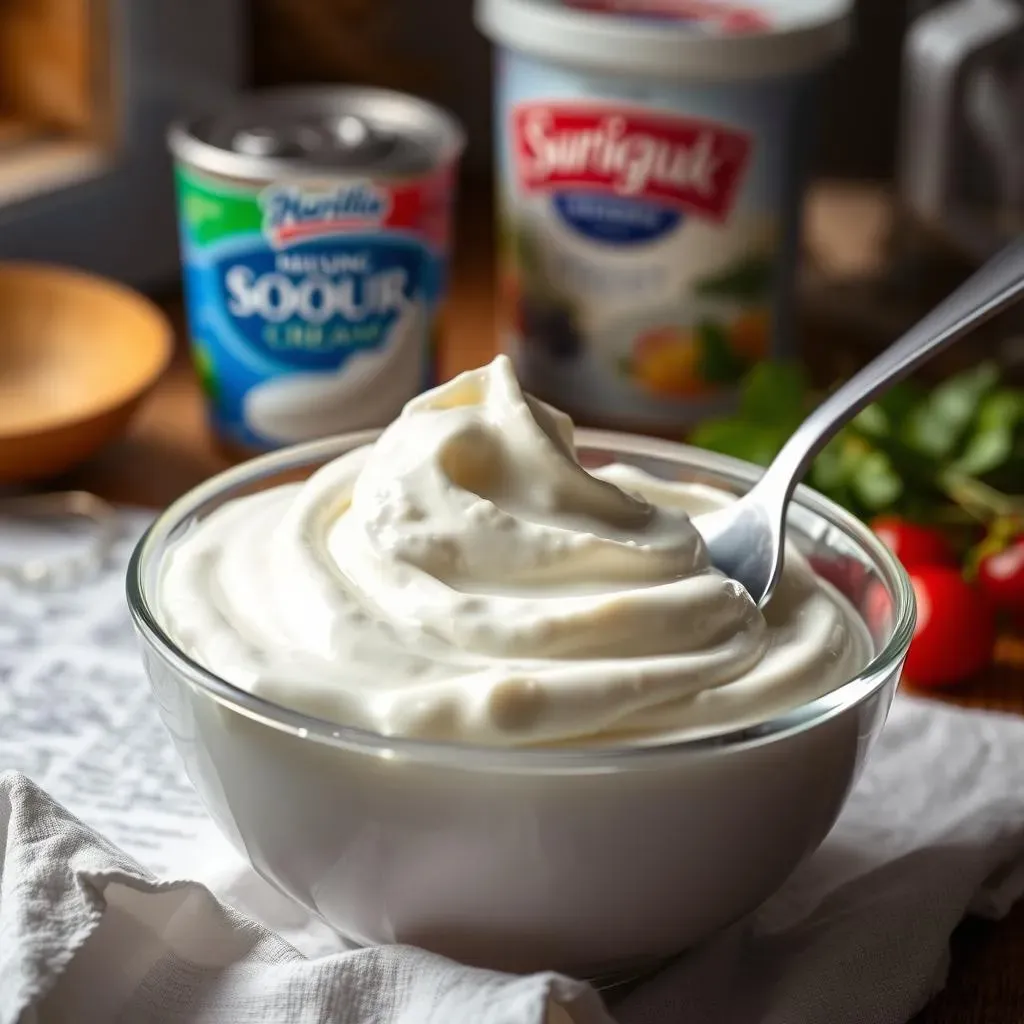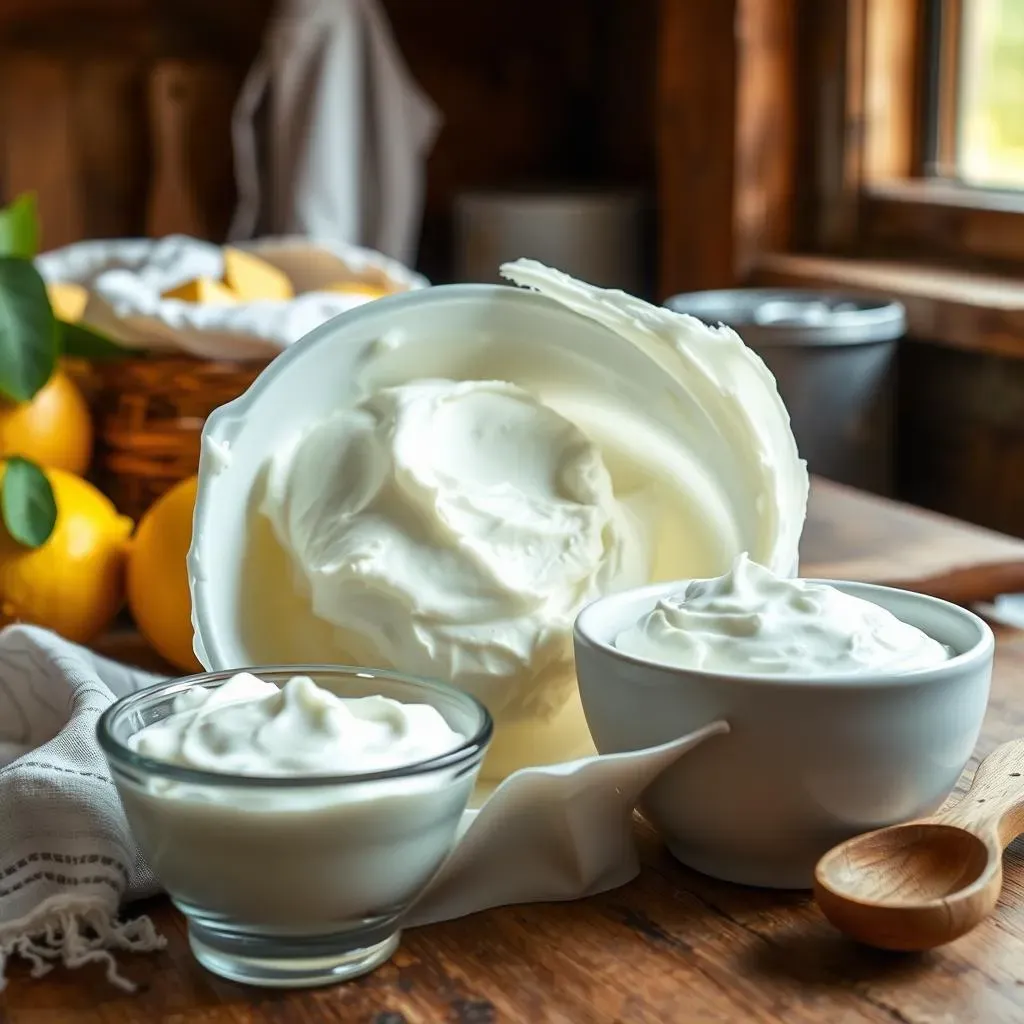Table of Contents
Ever found yourself in the middle of cooking, only to discover you're out of sour cream? It's a kitchen crisis we've all faced! But before you panic, there's a tangy, creamy hero waiting in your fridge: yogurt. Yes, you heard that right. Many folks wonder, "is yogurt a good substitute for sour cream?" and the answer is often a resounding yes! This article will be your guide to navigating the world of yogurt substitutions. We'll explore when yogurt shines as a sour cream replacement, and when it might need a little help. We will also look at the best types of yogurt to use, such as the popular Greek variety. I’ll also share some simple tricks to ensure your dishes turn out fantastic, whether you're baking a cake or whipping up a dip. Get ready to become a substitution superstar, and say goodbye to those sour cream shortages!
Yogurt as a Sour Cream StandIn: What You Need to Know

Yogurt as a Sour Cream StandIn: What You Need to Know
Okay, so you're staring into the fridge, recipe in hand, and the sour cream is MIA. Don't sweat it! Yogurt, especially the Greek kind, can step right in. Think of it like this: sour cream is the cool, slightly tangy cousin, and yogurt is the equally cool, but maybe a bit more health-conscious, relative. They've both got that creamy texture and that slight zing, but yogurt tends to be a bit lighter. The big thing to remember is that not all yogurts are created equal when it comes to subbing for sour cream. You've got your regular yogurt, your Greek yogurt, and then the whole range of fat percentages. Picking the right one is key to getting the texture and flavor right in your dish. It’s not a perfect match every time, but it's a darn good alternative, and it's often something you already have on hand, which is a win in my book.
Making the Swap: When Is Yogurt a Good Substitute for Sour Cream?

Making the Swap: When Is Yogurt a Good Substitute for Sour Cream?
Baking Bliss or Baking Blunders?
Alright, let's talk baking. This is where things get interesting. Yogurt can be a fantastic sour cream substitute in many baked goods. Think cakes, muffins, and quick breads. It adds moisture and a lovely tang that can really elevate your treats. The key here is to go for plain, full-fat Greek yogurt if you can. It has the closest texture and fat content to sour cream, so you'll get the best results. If you're using regular yogurt, you might want to drain off some of the liquid first, otherwise, you may end up with a slightly soggy result. I’ve used it in banana bread and the result was delicious, no one can tell the different, it's like a magic trick in the kitchen.
Dips, Dressings, and Dollops
Moving beyond baking, yogurt is a total rockstar in dips and dressings. It's a healthier alternative to sour cream, giving you that creamy texture without all the extra fat. You can use it as a base for a creamy ranch, a tangy tzatziki, or even a simple topping for tacos. Just be mindful of the flavor. Sour cream has a very specific tang, so if you want to mimic that perfectly, you might need to add a touch of lemon juice or vinegar to your yogurt. It’s all about finding the right balance to make your taste buds happy. I've even used it to make a creamy potato salad, and it was a hit!
Use Case | Yogurt Type | Notes |
|---|---|---|
Baking | Full-fat Greek yogurt | May need to reduce other liquids in recipe |
Dips/Dressings | Plain yogurt | Add lemon juice/vinegar for tang |
Toppings | Any plain yogurt | Consider consistency and flavor |
Where Yogurt Might Struggle
Now, let’s be real. Yogurt isn’t a perfect match for sour cream in every single scenario. If a recipe relies heavily on the richness of sour cream, like a really decadent frosting or a super creamy sauce, then yogurt might fall a bit short. It’s just not as fatty, so it won’t give you that same luxurious mouthfeel. In those cases, you might need to add a little extra fat, like a bit of cream cheese or a pat of butter, to make up the difference. The key is to understand the role of sour cream in the recipe and adjust accordingly. It’s all about learning what works and what doesn’t, and not being afraid to experiment a little. After all, cooking should be fun!
Tips and Tricks: How to Use Yogurt as a Sour Cream Substitute Successfully

Tips and Tricks: How to Use Yogurt as a Sour Cream Substitute Successfully
Choose Your Yogurt Wisely
First things first, not all yogurts are created equal when it comes to replacing sour cream. For the best results, go for plain, full-fat Greek yogurt. It’s thick, creamy, and has a similar tang to sour cream. If you can't find Greek, regular full-fat yogurt will work in a pinch, but you might want to strain it through a cheesecloth for a bit to remove some of the whey, making it thicker. Avoid flavored or low-fat yogurts, because they often have added sugars and stabilizers that can throw off the flavor and texture of your dish. Trust me, starting with the right yogurt makes a huge difference. It’s like choosing the right paint for a masterpiece – it sets the stage for success.
Adjust for Tang and Richness
Yogurt, while tangy, might not have the exact sourness of sour cream. If your recipe really relies on that extra zing, you can easily boost it. Try adding a squeeze of lemon juice or a splash of white vinegar to your yogurt. Start with a small amount and taste as you go, because you can always add more, but you can't take it away. Also, if you find that the yogurt is a bit too light, you can add a touch of olive oil or a small dollop of cream cheese to get it closer to the richness of sour cream. It’s all about playing around and finding what works best for your taste buds. Think of it as a little kitchen experiment, and don't be afraid to get creative.
Mind the Liquid
One of the biggest differences between yogurt and sour cream is the water content. Yogurt tends to have more liquid, which can sometimes make your baked goods a bit soggy or your dips too thin. To avoid this, consider reducing other liquids in your recipe when using yogurt. For baking, you might reduce the milk or water by a tablespoon or two. For dips, you can strain your yogurt or add a thickening agent like a bit of cornstarch. And remember, always add yogurt slowly and mix it well with other ingredients. This will help you achieve the desired consistency. It’s not rocket science, but it does take a bit of attention to detail.
Issue | Solution |
|---|---|
Not Tangy Enough | Add lemon juice or vinegar |
Not Rich Enough | Add olive oil or cream cheese |
Too Watery | Reduce other liquids or strain yogurt |